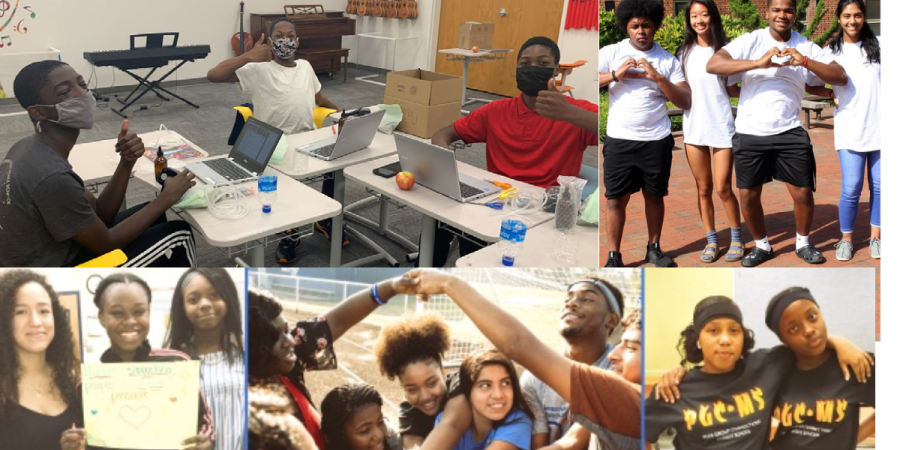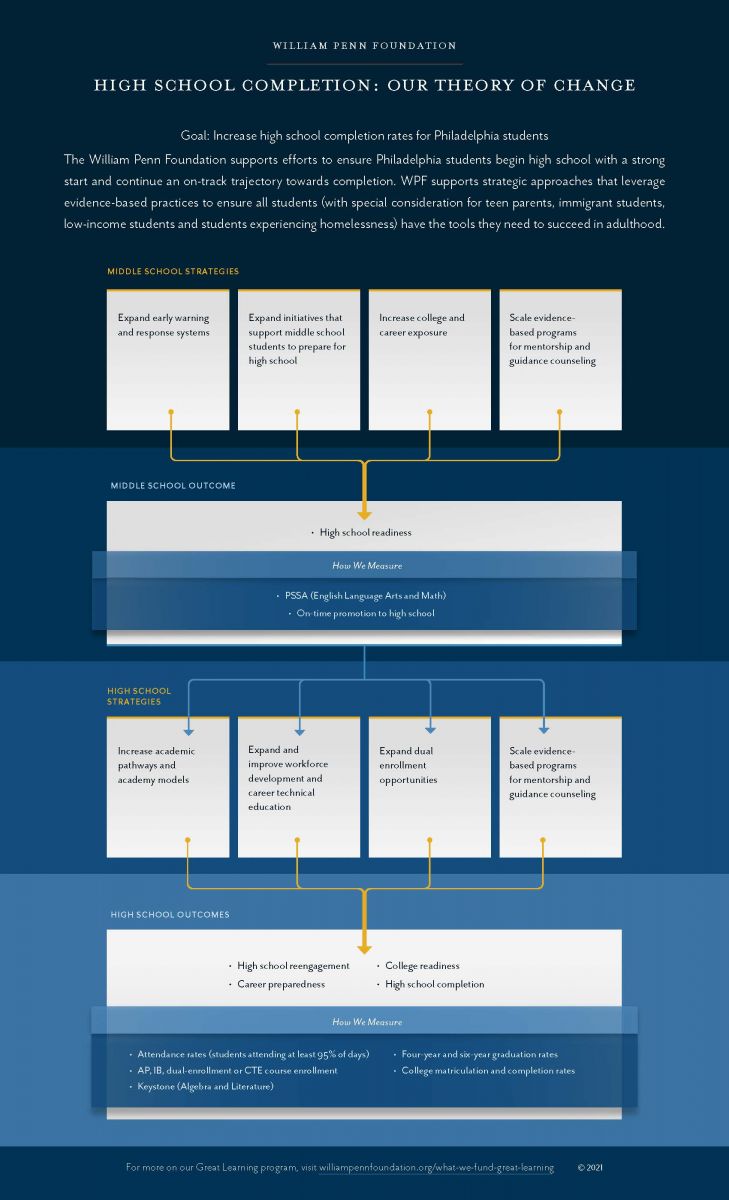Blog

Our Theory of Change: Targeted Support and Collaboration for High School Success
The high school years are the launching pad to young adulthood. Students continue to learn new concepts and material and also practice applying their skills and knowledge in preparation for their next step, whether on a college campus, a job site, in a career training program, the military, or as an entrepreneur.
This is a crucial time in life, and we cannot overlook how important it is that students are on track to complete high school, graduate, and gain the skills needed to succeed in their desired paths. The journey to high school graduation begins in earnest in middle school, well before 9th grade. In particular, a strong transition from middle school to high school and a successful 9th grade year have been shown to predict high school graduation. Exposure to career paths and work experiences while in high school also promote graduation.
These transitions – from 8th to 9th grade and from 12th grade to postsecondary – can be exhilarating, confusing, or daunting, even in the best of times. Now consider what the past year has been like for students, especially those completing their last year of middle school or their first or last year of high school.
While much of our work at the William Penn Foundation focuses on children’s early learning from birth to age 8, we also make select grants for strategic approaches to support students on the path to high school completion. We have documented our Theory of Change to explain our high school funding strategy, which takes into consideration the current opportunities and obstacles, the large amount of local research available, and what we have seen work in Philadelphia and other communities. Our Theory of Change highlights our strategy, intended outcomes, and how we measure impact. It’s important to continue the improvement trend of more students completing high school. This can be done with targeted support and collaboration.
Continuing positive trends under new conditions will require evidence-based approaches and collaboration toward more coordinated support for students. Many youth-supporting organizations in Philadelphia work with middle and high school age students; are there more ways we can be collaborating to support the students who will be taking their first steps into high school or into post-secondary opportunities?
We have been pleased to see some promising recent examples of collaboration to improve high school completion in Philadelphia.
For example:
- Steppingstone Scholars and Philadelphia Futures are collaborating to provide bridge programming for beginning high school students, support students’ participation in dual enrollment programs that allow high school students to simultaneously take college courses, and scale school counselor professional development.
- Magee Rehabilitation is working with the Sierra Group to expand academic support and resources for high school age patients who have experienced a catastrophic injury or illness to reengage in high school and receive coaching support aligned to college and career readiness.
- The Center for Supportive Schools has partnered with the School District of Philadelphia and four local high schools to increase student engagement and on-time graduation. High school juniors and seniors were trained to be peer mentors for incoming 9th graders at their schools. Early data suggest that program participants became more motivated to complete high school, felt more connected to their school, and increased their leadership skills.
Our Theory of Change seeks to support more promising collaborations that build on organizational and programmatic strengths and improve outcomes for Philadelphia students. I would love to hear your thoughts on this document, your ideas for supporting students along the pathway to graduation, or areas of collaboration you are exploring with partners.
Subscribe To Our Blog
Subscribe to our updates and always be in the know!

